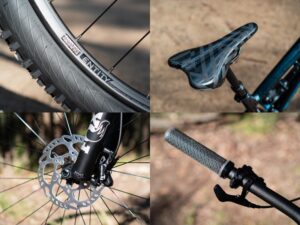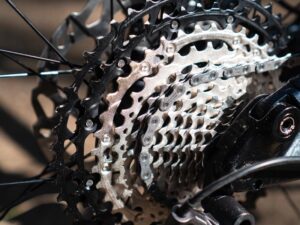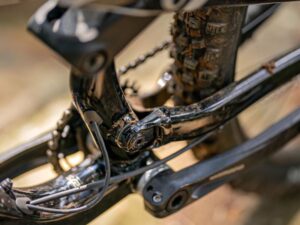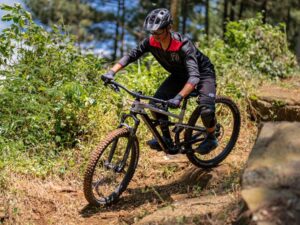Knowledge about how to service a mountain bike yourself is a skill that is worthy to master. Of course, we wouldn’t want our mountain bike to break down in the middle of nowhere but we should have always been prepared for the worst scenario, especially when we are going off-road riding, right?
You certainly aren’t obligated to master the mountain bike service like a true mechanic, but at least, you should know the basics on how to get back on your bike until you can get the service to find the “mountain bike service near me” through your smartphone—you should probably get what we are trying to say.
So, what should you prepare for servicing your mountain bike? How to service a bike and get back to your pedal faster? Find out your answer through this article, hope you have a good read!
Tools that You Need for Service your Mountain Bike
Tools are the very first thing you have to prepare when you want to do a service for your bike based on the mountain bike maintenance course you learn through the internet or from the mountain bike maintenance pdf you get from another bike enthusiast. The basic tool you will need is:
- Torque wrench;
- Grease;
- Allen Keys;
- Clean clothes;
- Bike wash;
- Pedal spanner;
- Chain cleaner;
- Chain lubricant, and;
- Bike stand.
The bike stand is an optional choice but recommended to get your job done better and easier. For the grease, we recommend having one formulated with ceramic particles, fluoropolymer additives, and premium non-toxic synthetic oils for maximum protection against abrasion and heat to keep your bearing working well and last longer.
For the cleansing and lubricating tool, it will help you save more money by purchasing a set of cleaning and lubricant kits that come in bundles. But of course, you can visit Rodalink for other options of high-quality bike cleaner.
The Area that You Need to Check for Service
After getting the proper tool ready, now it’s time to know which area you should pay attention to when you want to service your bike. We will be dividing the topic into which area to maintain before the ride, after the ride, and seasonally.
Before the Ride

Before each ride, your mountain bike should have to go through:
Tire Pressure Check
It is a normal thing for a bike tire to get flattened or lose some air even when you are not using it for the ride. So before you are hitting the road, make sure your bike is having the correct tire pressure. You can get your mountain bike tire pressure checked more accurately by using a digital gauge.
Brakes and Levers Check
Having a functioning brake is the most crucial thing to ensure your safety during the ride. You can take a quick test ride around your living area and pump the brakes a bit. If it feels a little loose, try to pump them a few more times or turn your bike upside down to free the small bubble out from your brake.
If it feels soft, you will have to check whether your brake pads are worn out or not and check the lines to ensure it doesn’t leak. Although you do not necessarily have to check the pads every time you ride, growing the habit of occasionally inspecting them will do more good than bad.
Shifting Check
Same with checking the brakes, you can try to run through all gears and check if there’s something off from your bike. If it feels off, check your wheels and make sure they are seated properly in the skewers or thru-axles. Check your chain and ensure all of the links are running across the chainring and cassette with no skip.
In case your chain is shipping, lube the chain to get rid of the frozen link. If your wheel is seated properly where they are supposed to, you will have to adjust the barrel adjuster on your shifters forward and backward—but please only do this if you know exactly what to do because you don’t want to make shifting worst. Get your bike to the service center if you don’t know how to adjust the barrel adjuster.
Pedal Check
The pedal is one of the most overlooked contact points despite its crucial to determining your performance during the ride. Make sure your bike pedal is clean and that you can get in and out of your pedal easily before using it to hit the off-road trail.
Check the Fit
During the test ride sound your living area before hitting the road, you will have to ensure there’s nothing that feels off since the very last time you rode the bike. Adjust the post height and saddle while ensuring your dropper post is still working properly.
Bolts and Screws Check
If you are just installing new components, especially one with a lot of torque like the chainring, for example, make sure to frequently check all of your bolts, on every part, and ensure none of them is loosening or missing.
And please, don’t be tempted to tighten your bolts every time you are checking on them to avoid over-tighten and damaging some parts.
Skewers and Thru-Axles Check
You will not like it when your wheel comes off in the middle of your ride, especially when you are riding downhill. Your axles might loosen for various reasons so make sure to check them before you ride your bike.
After the Ride

It’s good to hear that you have coming back from your long riding journey safe and sound. But anyway, before storing your bike in the garage, let’s get your bike checked, again. What you will have to do:
- Inspect your bike and ensure there’s no crack in the frame and handlebars area, check your drivetrain, brakes, and every part of your bike;
- Clean your bike. While you don’t have to always was your bike every time you are coming back from a ride, it is mandatory to keep it clean. On daily basis, you can wipe your bike with a cloth and get the bike for a gentle wash every once a week. You can use the bike-specific cleaner to make sure your bike’s paint doesn’t wear off because a strong detergent;
- Wipe down your suspension stanchions. Keeping dust and mud off of the stanchions preserves the reliability of your fork/shocks, and extends the service interval by keeping dirt out of the suspension oil. Checking the recommended air pressure for both fork and shocks every few rides is also a good idea;
- Lube the drivetrain after you are done wiping or cleaning the chain after a ride will attract less dirt than lubricating it before a ride. Pay attention to the amount of lube you use, too much lube will attract more dust and interfere with the shifting.
Seasonal

Besides performing mountain bike maintenance after each ride, it is always best to have your bike undergo a throughout service seasonally. This includes a detailed inspection, deep cleaning, and lube, replacing the bottom bracket, refreshing the tire sealants, rebuilding hubs, service forks or shocks, and many more.
How Often Should You Service Your Bike?

Here comes the question, how often do cyclists should service their bikes or make the MTB maintenance schedule? This all depends on how well you have been maintaining your bike regularly, how many miles has your bike gone through, and the conditions of the road where you ride your bike.
If you have been checking on your bike and ensuring all of its components are in good working order on a routine basis, your mountain bike service cost will be lower than those who wait until there’s something that breaks to do maintenance and checkups.
Too busy maintaining your bike regularly? You can bring your bike to Rodalink. They have a one-stop cycling store that will help you do routine maintenance on your behalf. You can register to become part of the Rodalink community to get a special price offer for your services.
And if you happen to look for a new well-performing bike that is not overly pricey, you can also find them at Rodalink. For a little information, Rodalink is the official distributor of Polygon bikes although you will find more than just a Polygon mountain bike at their store.
With a wide range of bikes, accessories, parts, and even apparels, you are guaranteed to find everything you need to enhance your cycling experience at Rodalink. So, visit and get your desired bike immediately.
